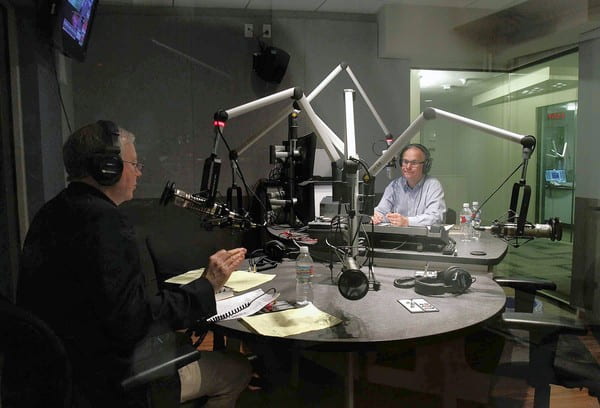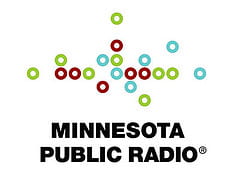Dean Ernest J. Wilson III of USC Annenberg and the Center on Communication Leadership & Policy are preparing for the annual James L. Loper Lecture in Public Broadcasting on November 18, 2010. This year’s speaker is NPR president and CEO, Vivian Schiller. Public radio, despite the failings of most media outlets in the US, is experiencing an increase in listeners and in funding. Below is an article published in The Los Angeles Times by James Rainey exploring the growth that is occurring in public radio.

Southern California’s biggest public television station threatens to pull out of the PBS network and the public television world trembles. An older audience is slowly fading to black. Replacement viewers aren’t on the near horizon. And the rest of cable TV has filled so many niches — art, science, nature, film, the outdoors and more — that it’s not so clear these days whether public television has a perch for the long run.
The precarious position of stations such as L.A.’s KCET stands in high relief when compared with the relative health and dynamism emanating from National Public Radio and its affiliates these days. More listeners continue to find public radio and, as evidenced by a couple of developments in recent days, the network and some of its executives want to make the footprint even larger.
The expansive news came from NPR Chief Executive Officer Vivian Schiller and public radio’s most aggressive entrepreneur, Bill Kling of American Public Media and Minnesota Public Radio. Both discussed plans to improve public radio’s local coverage by putting more reporting boots on the ground.


NPR plans to do it, in part, with its “Impact of Government” initiative, designed to add 100 or more journalists to cover the ways that state government affects people and communities. Kling pushes a plan to help public radio stations in Chicago, New York, Los Angeles and his own Minneapolis-St. Paul build newsrooms of 100 or more.
Schiller and Kling said these plans represent only starting points. With NPR already well established as a national and international news source, its biggest gaps are on the local front. And that happens to be where newspapers and other media have cut back.
Public radio executives join the growing push by new media to fill the local news void. AOL’s Patch.com has websites in nearly 300 communities and is growing steadily. EveryBlock, owned by MSNBC.com, aggregates property, crime, education and other public records to help people better understand their neighborhoods.
Don’t count on any clarity in the local news space any time soon as newspapers tenaciously cling to their incumbent advantages — including staffs still larger than most of the upstarts — and upstarts continue to crowd the space.
I’m doubtful of the few who have been suggesting that public radio stations and their websites will become the primary sources of local news. I expect we’re looking at a more cacophonous future — with the radio news sources just one of many voices in the room.
But public radio leaders, particularly Kling, intend to be a bigger and better voice. They want NPR affiliates to throw off their tweedy, academic reserve to compete aggressively for audience, donations and news.
Kling said his analysis shows that if all of the top 25 markets in the public radio system raised money at the same rate as Minnesota Public Radio, an extra $410 million a year would pour in. That would be more than enough, he contends, to pay well more than 100 additional journalists in each of those cities.
“If local news gathering is insignificant, then NPR is limited in terms of how it can grown,” Kling told me on Monday, following up an interview last week with new media analyst Ken Doctor about his expansion plan. “NPR will have trouble reaching its full potential if its local stations don’t do more. What seems clear is that we have underperformed.”
This sort of bold talk makes Kling both a hero and an occasional villain in the insular and genteel public radio world. After building Minnesota Public Radio into a powerhouse (with 111,000 subscribers, many times what most stations in more populous locales can claim) Kling helped start American Public Media, nurturing mainstays such as “Prairie Home Companion” and “Marketplace.”
Among its most notable successes was the takeover a decade ago of Pasadena-based KPCC-FM (89.3). That put management of the station outside previous operator Pasadena City College and in the hands of an independent board and chief executive, Bill Davis. The station, with its focus on news and public affairs, is within reach of tripling its audience in a little more than 10 years. Nationally, the total public radio audience has increased 50% over that time, to more than 27 million listeners a week.
Kling would like to see much greater reach, expanding from current penetration of roughly 10% of American households. He noted that 80% of households in Britain get information from the BBC in some form, either via radio, TV or the Internet.
 Though he’s scheduled to retire, at 68, in June, Kling (pictured right) does not intend to stop his push to build local coverage. Through a volunteer position at a group he formed, the Alliance for Public Media, he intends to keep dogging broadcasters and donors.
Though he’s scheduled to retire, at 68, in June, Kling (pictured right) does not intend to stop his push to build local coverage. Through a volunteer position at a group he formed, the Alliance for Public Media, he intends to keep dogging broadcasters and donors.
His initiative would mean a substantial increase in news gathering capacity. At KPCC, for example, the news staff of 41 (14 of them field reporters) would grow to 100.
Although some would see his fundraising goal of $100 million over five years hugely ambitious, Kling calls it “not a tremendous amount of money … no more than the wing of an art museum.” Albeit a museum wing that would have to be refinanced every five years to maintain the larger news staffs.
NPR boss Schiller said she and Kling “agree completely” on the importance of building local coverage. She said she spends up to half her time on the task. Rather than the Big Bang approach Kling describes, NPR’s plans call for sprinkling new reporters more evenly across the national map.

NPR’s “Argo Project” put reporter/bloggers in a dozen locations — one at KPCC focusing on immigration, another in San Diego watching the military, another in San Francisco focusing on technology in education. Their contributions appear mostly online.
The initiative announced this week will add reporters beginning next March. Schiller stressed that the journalists, two each in eight states to begin with, will focus on analysis and investigations, rather than daily news coverage at statehouses.
“Before, we at NPR had never made the most effective case we could,” Schiller said. Now she is telling donors how such local coverage “fits into the context of the larger national coverage. It’s a story we are telling now and it’s really, really resonating.”
Much of public TV hunkered down for years and paid the price as the audience passed it by. On the radio side, in contrast, a few leaders have been smart enough to realize their recent rise is not inevitable or permanent.
The original article can be found on the Los Angeles Times website and can be accessed by clicking here.